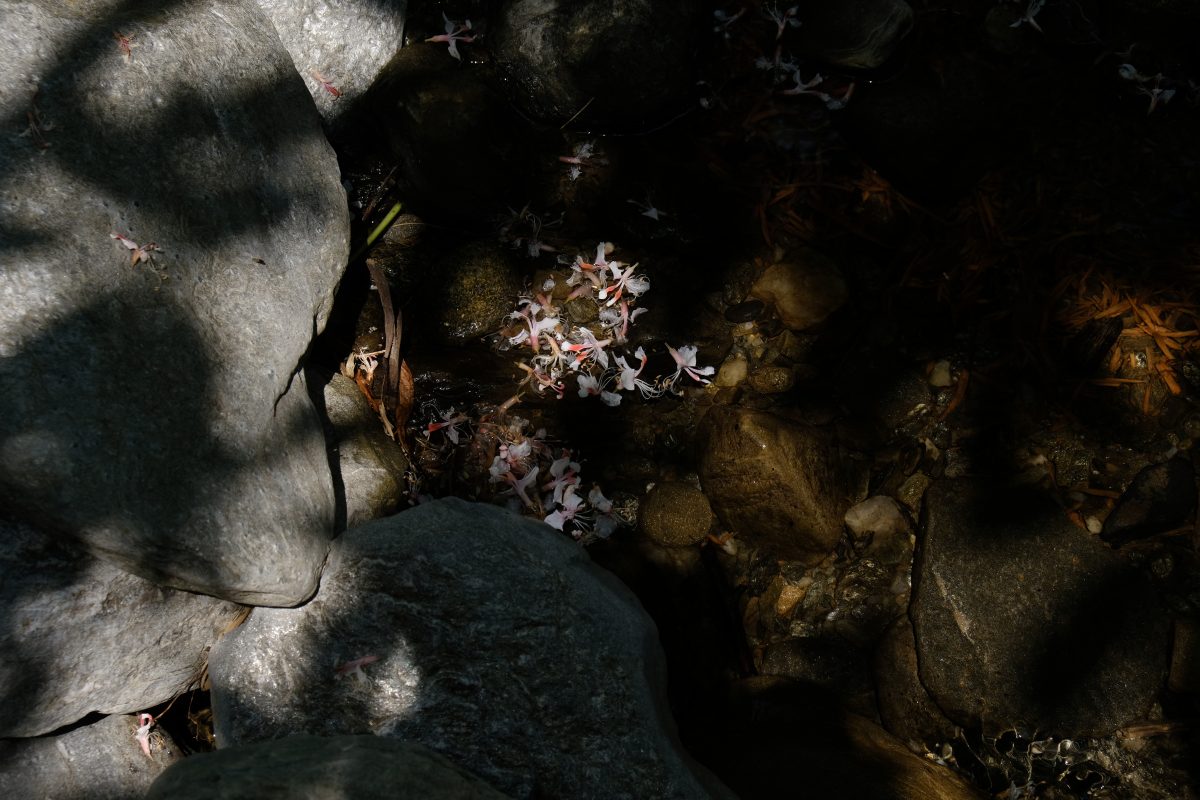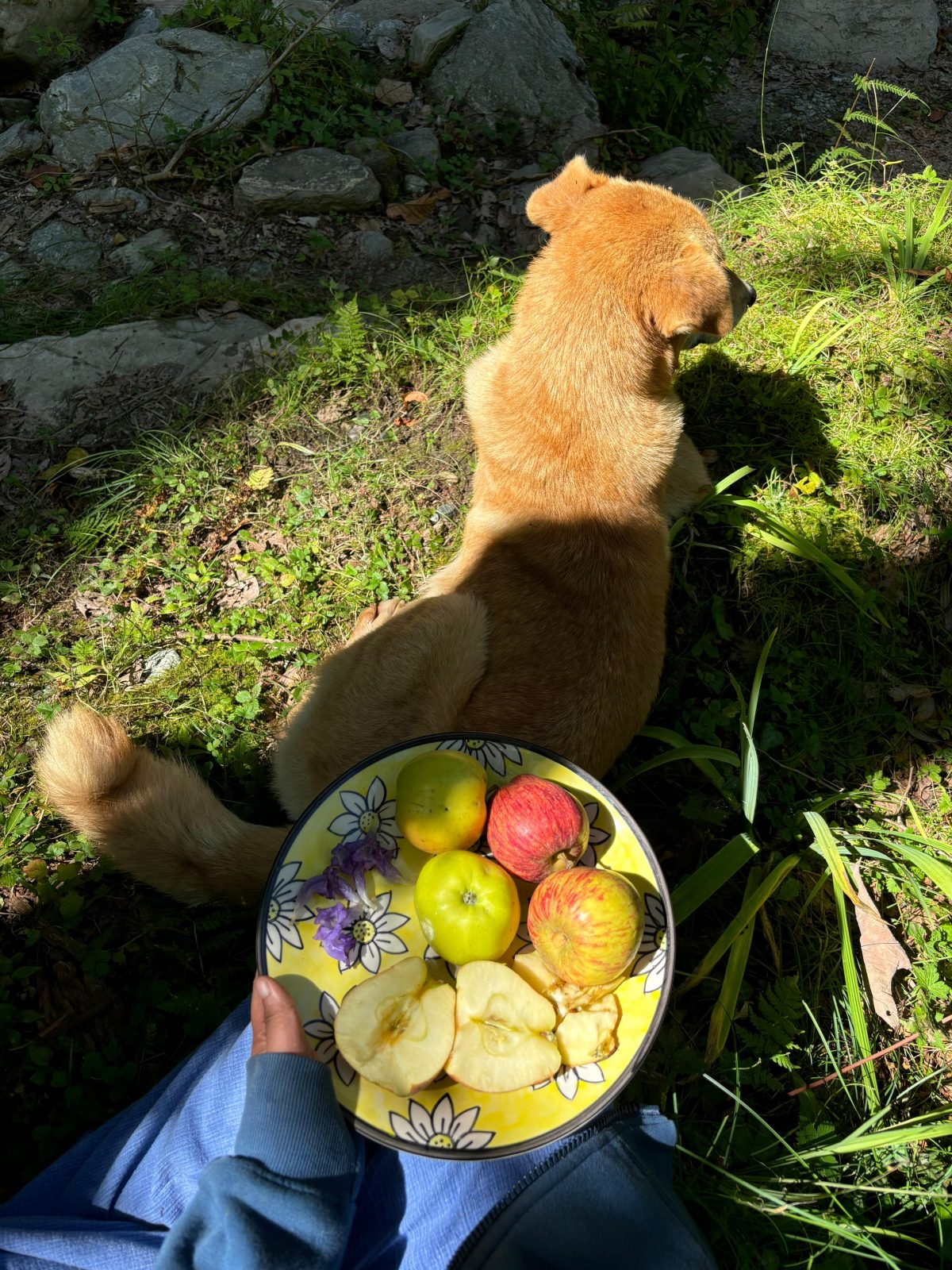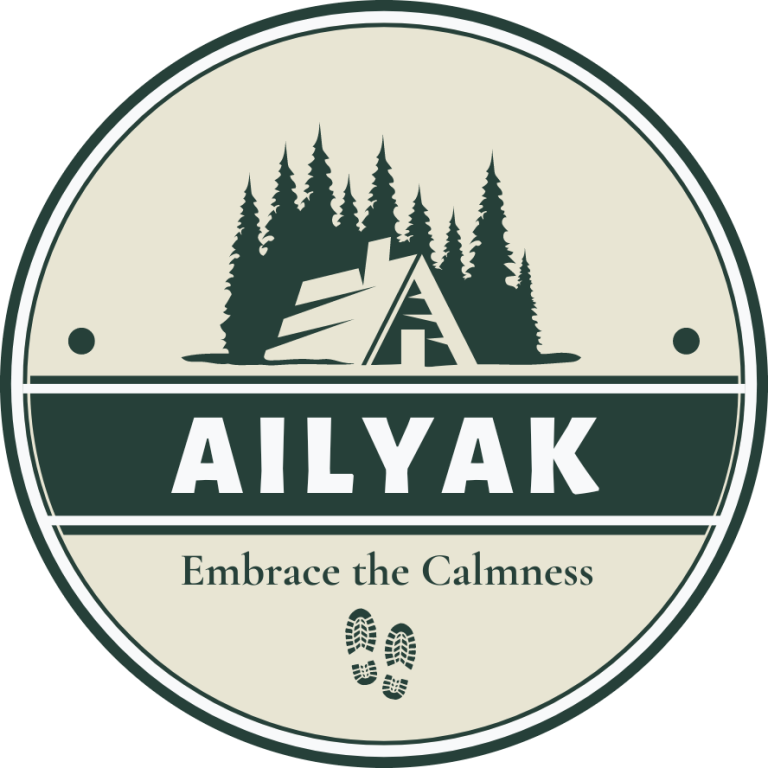Tucked just beyond the bends of Jalori Pass, the Raghupur Fort Trek is one of those rare trails that hasn’t yet been claimed by noise. The path winds gently through ancient deodar forests, opens into wild meadows, and ends with crumbling fort walls that whisper old mountain stories—if you’re slow enough to listen.
Most who walk it come for the view. But there’s more here than what’s seen from the top. At Ailyak, we offer the kind of Raghupur experience that doesn’t just take you up—it draws you inward. We guide the trek, yes. But we also help you pace it with breathwork, stop where the birds gather, rest where the wildflowers bloom. We prepare your meals, your stay, your tea for after. And most importantly, we share what most miss: the silence behind the landscape.
Because this isn’t a hike to conquer.
It’s a path to soften. To notice. To arrive.
Why Raghupur Fort Trek is a Hidden Gem
The path to Raghupur Fort doesn’t roar—it hums. It begins beneath towering deodars, where light filters through branches like water through lace. In spring, rhododendrons bloom in soft reds, like the forest is blushing. In autumn, the air turns gold and the meadows open up like quiet secrets waiting to be seen.
And at the top, stone ruins stand quietly, holding stories no one fully remembers. Some say kings once watched for invaders from this perch. Others believe it was built just to be close to the sky. Whatever the truth, Raghupur isn’t about facts—it’s about feeling.
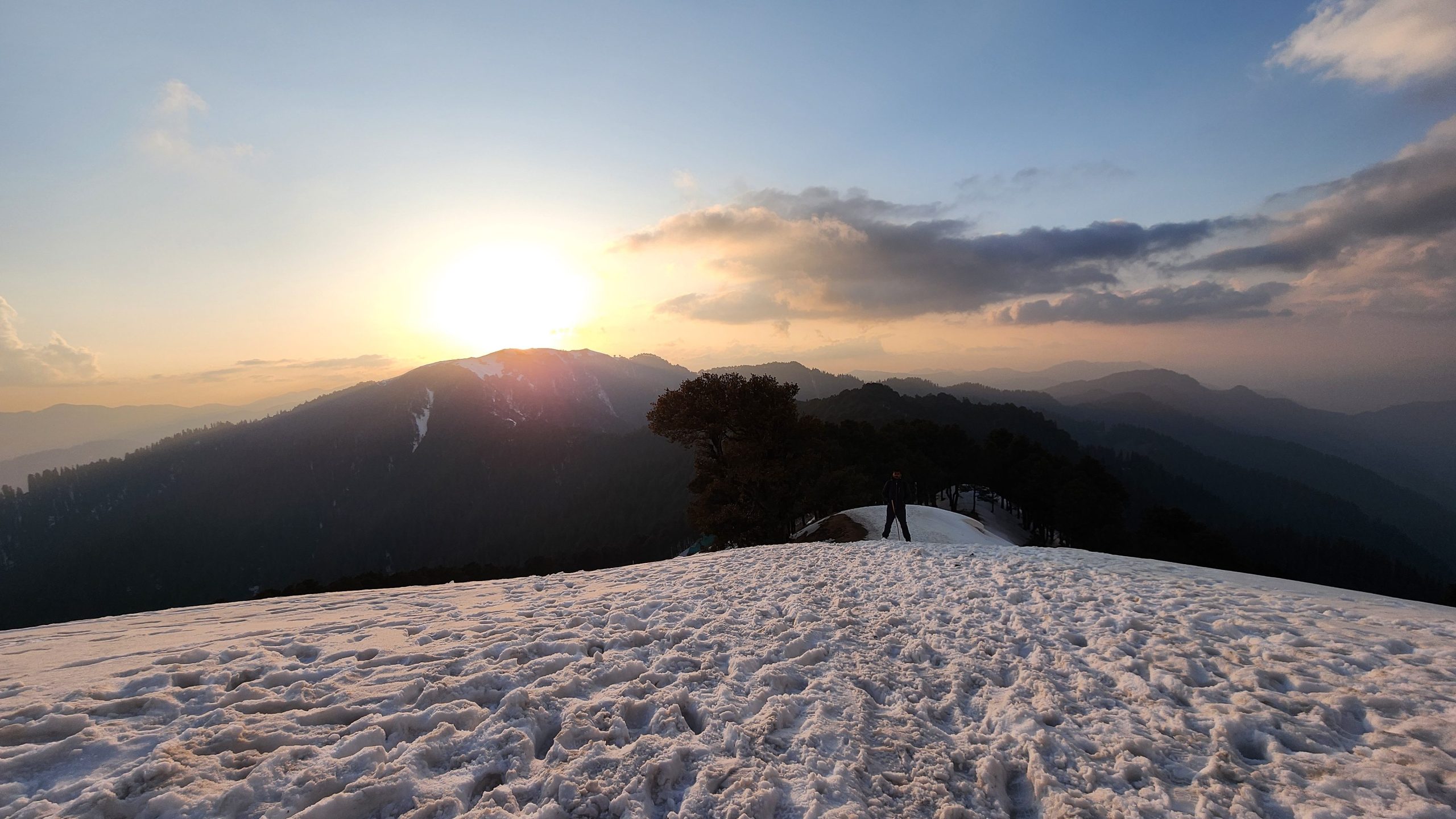
Most visitors rush the trail. They pass through the woods with their heads down, chasing the summit, checking the box. But they miss the meadow turn-offs, the wind-sculpted trees, the hush of birdsong just off the main path.
With Ailyak, the journey is the destination. We don’t just walk you to the top—we guide you into the mood of the place. The silence, the shifting light, the stillness that makes you feel like time has slowed, just for you.
The Ailyak Experience of the Raghupur Fort: Trek, Stay & Flow
Raghupur isn’t just a destination—it’s a rhythm. And at Ailyak, we help you trek it slowly, with intention.
We begin at Jalori Pass, where one of our local hosts—someone who’s grown up knowing these forests like old friends—leads you through the trail. Their pace is not hurried. Their eyes catch what most overlook: a bird call, a bend in the breeze, a flower you might have missed.
You can choose a same-day return, a quiet half-day adventure with plenty of pauses. Or stay longer—spend the night at the top, where we arrange your tents, mats, and simple warm meals under the stars. There’s a kind of silence up there that city folk don’t often get to hear.
Before or after your trek, we welcome you into our space at Ailyak Shoja or Seri, where rooms open to forests and meals are served with soul. We pack you a picnic basket or snacks from Ailyak Café, carried with care to enjoy mid-meadow or fort-side. To help preserve the quiet beauty of the trail, we gently encourage guests to bring their own containers—because the less we leave behind, the more the forest gives in return.
And when you’re back, a bonfire might be waiting—where tired legs stretch, tea is poured, and stories flicker in the flame. No itinerary. No pressure. Just a natural flow.
Because with Ailyak, it’s never about how fast you reach the top—it’s about how deeply you feel it when you do.
Hidden Things People Miss at Raghupur Fort Trek
Most people come for the view—and leave with just that. But Raghupur has more to offer if you know where (and how) to look.
Just before the final ascent, there’s a meadow that breaks away from the main trail—a soft, open space with a panoramic view of the valley that few take the time to notice. It’s not marked. It’s not loud. But it’s where the silence feels widest.
Along the trail, you might find stones etched with old carvings, or tree trunks marked with symbols locals believe carry mountain blessings—tiny traces of stories long since blended into the forest. Most walkers pass them by without seeing.
Behind the crumbling remains of the fort lies a hidden sunset point, where the sky opens quietly over layers of ridges. We’ve watched light spill there like a secret.
There’s even a small alpine lake tucked a little beyond the usual turnaround point—clear, still, and often missed by those hurrying back. And just above the ridge, a modest temple stands, often overlooked, yet deeply rooted in Himachali culture. Locals still visit it with reverence, quietly folding their palms to the winds that sweep through.
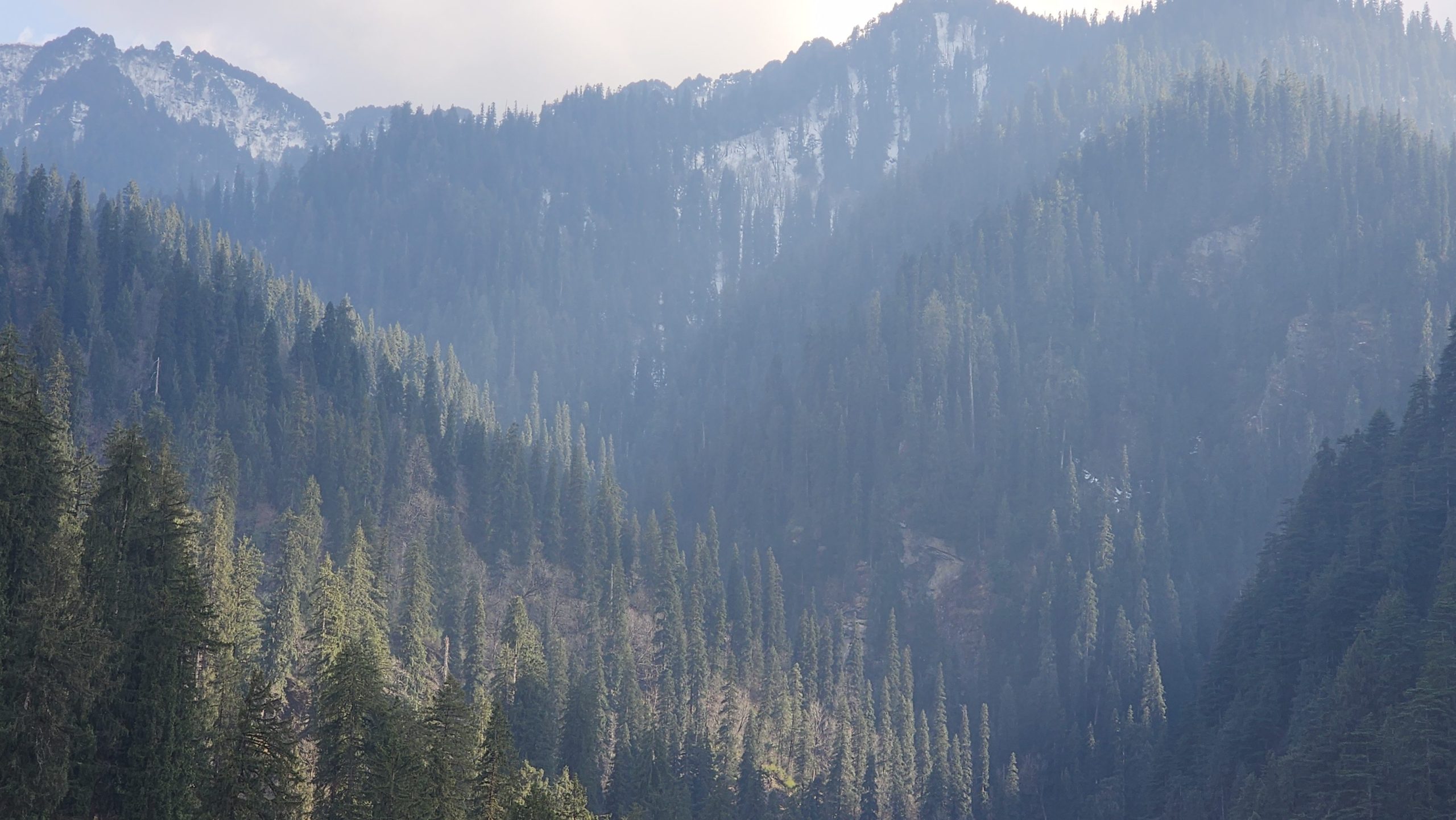
Sit long enough in the meadows, facing the right bend of the valley, and you might catch a glimpse of the mountain’s quieter inhabitants—horses grazing, sheep wandering, the soft patter of rabbits, and if the forest allows, even a fox slipping silently across the grass. There are resting spots where the birds gather, perfect for pulling out a journal or just sitting still long enough to feel the breath of the place. And in early spring, patches of wildflowers bloom unnoticed—soft, small, and unclaimed by Instagram.
These aren’t places we show you on a map. These are places we show you by feel. Because at Ailyak, we don’t just take you to the top, We walk you through the soul of the mountain.
What to Pack & How to Prepare for the trek?
Raghupur asks for little—just presence, care, and a willingness to tread lightly.
Here’s what we recommend bringing:
- Layered, weather-friendly clothing Mornings can be chilly, afternoons sunlit. Layers keep you comfortable without overpacking.
- Comfortable hiking shoes The trail is kind, but uneven in parts. Good shoes make the journey smoother.
- Reusable water bottle Stay hydrated without leaving plastic behind. We can refill it for you at Ailyak.
- A power bank (for overnight stays) Once the sun sets, the forest goes dark. Powerbank helps, but only when used in extreme case.
- A journal or sketchbook The quiet up there often brings thoughts worth keeping.
- Warm shawl or jacket for after the trek There’s a kind of stillness after movement—dress for that soft pause.
- Avoid packaged snacks or disposables We gently discourage single-use items. Instead, we offer homemade food in reusable containers, or you can bring your own.
- Choose low-impact personal items Think biodegradable soap, cloth napkins, and reusable utensils if you plan to camp. That said, you won’t need to carry much—with Ailyak’s partners, we provide tents, mats,warm food, and blankets for overnight stays. Just bring your own warm layers and an open mind. Keep your bag light; let the mountain carry the rest.
- Carry back what you carry in We don’t leave footprints on this land—we leave thanks.
At Ailyak, we believe in living alongside nature, not just passing through it. Every wrapper avoided, every plastic bottle left behind—it all adds up to a trail that stays wild, for the next traveler, and the one after that.
When to Go: Best Season for Raghupur Trek
Each season brings a different rhythm to Raghupur—and each has its own quiet charm.
- Spring (April–June): The trail blushes with blooming rhododendrons, and the forest feels alive with light and song. The weather is gentle, making it ideal for mindful, unhurried walks.
- Autumn (September–early November): The air turns crisp, the meadows golden, and the path is quieter. Clear skies in October make overnight camping a dream, with stars bright enough to make you forget your phone exists.
- Winter (late November–February): If you’re lucky, you’ll catch fresh snow at the top, turning the fort into a silent, white-dusted wonder. The trail may get slippery, but Ailyak supports every step—with gear, guidance, and warm chai waiting when you return.
We avoid peak monsoon months (July mid to August mid) due to unpredictable weather, but we keep a close eye on the skies and guide you safely if conditions are clear.
Whatever the season, we help you walk with the mountain—not against it.
A Hike That Stays With You
Raghupur Fort isn’t a place you check off—it’s one you carry with you. And when you walk it with Ailyak, the trail opens differently. Slower. Deeper. Softer. We don’t rush to the top. We stop where the light shifts, where the forest hums, where stories linger in silence.
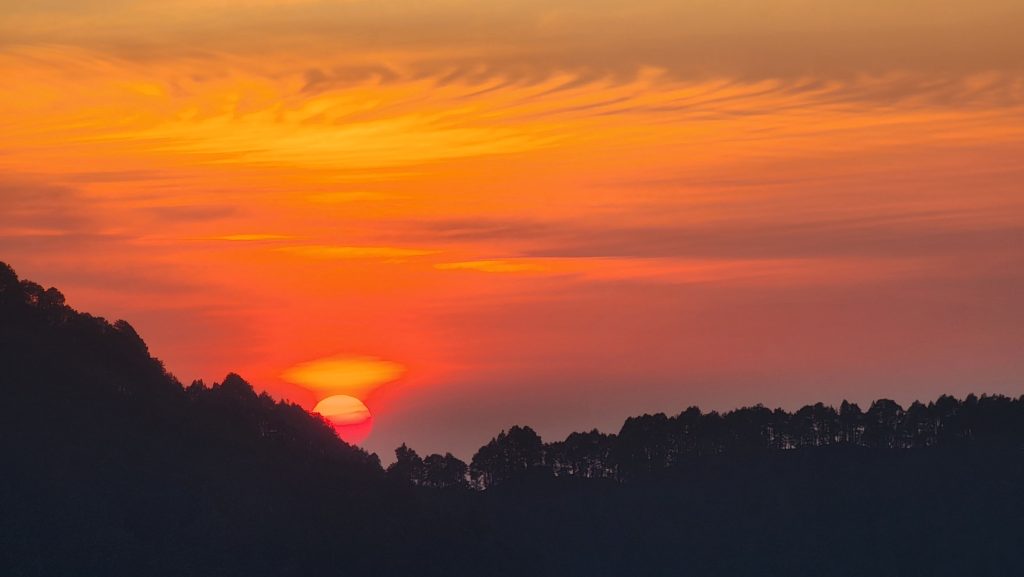
From thoughtful pacing to warm meals, hidden corners to honest connection—this isn’t just a trek, it’s a remembering. Of stillness. Presence. Of walking with intention.
So if you’re ready to step off the usual path and into a rhythm that feels more like you, we’re here. With boots laced, chai packed, and a trail that waits quietly for your arrival.
Book your Raghupur trek the Ailyak way—where every step is a story waiting to be told.
Ready to walk slower, see deeper, and feel the mountain differently?
Let’s plan your Raghupur experience together—reach out below
Enquire on Whatsapp.
Reach out on Instagram DM.
Frequently Asked Questions: Raghupur Fort Trek with Ailyak
1. Where does the Raghupur Fort Trek start?
The trek begins at Jalori Pass, located about 5 km from Ailyak Stays in Shoja and roughly 8 km from Ailyak Stays Seri. From there, it’s a moderately easy walk through shaded forest trails and wide open meadows, gradually leading you to the historic fort.
As part of your Ailyak experience, we offer comfortable transport to and from the pass, but if you prefer the DIY route, we’ll happily guide you on how to get there safely and mindfully. Either way, the mountain will meet you where you are.
2. How long is the Raghupur Fort Trek?
The trek is approximately 3 km one way and usually takes around 1.5 to 2 hours to reach the top—if you walk at a relaxed pace, as we encourage. It’s not just about the destination; it’s about noticing the small things along the way—the changing light through the trees, the sound of leaves underfoot, the hush that only lives deep in the forest.
With Ailyak, there’s no need to rush. We walk slow so you can feel more.
3. Can I do the Raghupur trek without a guide?
Yes, you absolutely can—but we gently recommend going with a local guide, especially if you’d like to uncover the quiet spots and hidden corners that most travelers unknowingly pass by.
At Ailyak, we offer both guided and self-guided options. If you choose to go on your own, we’re happy to provide trail directions, safety tips, and help you pace the walk in harmony with the land.
That said, if you’re trekking in snow or aren’t used to mountain trails, having a guide is not just helpful—it’s wise. And it doesn’t have to be us. We’ll gladly connect you with trusted locals, even if you prefer a different setup. What matters most is that you experience Raghupur safely, slowly, and fully.
4. Can I camp overnight at Raghupur Fort?
Absolutely. Overnight camping at Raghupur is one of the most serene ways to experience the mountain’s stillness—and Ailyak helps make it seamless. We arrange tents, mats, and simple warm meals through our trusted local partners, some of whom have been hosting campers here since the earliest days of Raghupur camping.
Whether you’re watching the stars unfold above the ruined fort or catching the first light of dawn over endless ridgelines, a night here stays with you long after you leave. Just let us know, and we’ll set everything up—with care, comfort, and respect for the land.
5. Is the trek suitable for beginners?
Yes, absolutely. The Raghupur Fort trail is beginner-friendly, with a gentle gradient and a peaceful path that winds through forest cover most of the way. It’s ideal for solo travelers, couples, and small groups seeking a quiet Himalayan experience without the intensity of high-altitude climbs.
The key is to walk slow, stay with your group, and soak in the forest without rushing. As long as you don’t wander off the trail or go too far alone—especially in unfamiliar weather—you’ll be perfectly fine. And if you need someone to walk beside you, we’re here.
6. What should I carry for the Raghupur Trek?
We suggest layered clothing, good hiking shoes, a refillable water bottle, sunscreen, and a flashlight if you’re planning to camp. We’re always happy to help you prepare—whether you’re trekking with us or on your own. Just walk gently, come prepared, and respect the rhythm of the forest—and it will welcome you in return.
7. When is the best time to do the Raghupur Trek?
April to June is great for greenery and blooming rhododendrons. September to November offers clear skies, golden light, and fewer crowds.
Winter (Nov–Feb) may bring snowfall—beautiful, but the trail can be slippery. We help you prepare if you’re trekking then.
Avoid peak monsoon (July–August) due to trail conditions, unless the weather clears.
8. Is there mobile network on the trek or at the top?
Yes, you’ll get some network coverage at the top—enough to message or call loved ones. But we gently invite you to put the phone away and be where your feet are. The views, the stillness, the wind through the trees—those moments are harder to come by than a signal.
9. Do you provide food and tea during the trek?
Yes! You can pre-order packed meals from Ailyak Café, and we often serve chai or herbal tea at scenic spots or once you’re back.
We also work with local partners who can handle special food requests, depending on what the trail and resources allow. Just let us know in advance—we’ll make it comforting, not complicated.
10. How do I book the Raghupur experience with Ailyak?
Simply message us on Instagram, WhatsApp, or speak to our team at check-in. We’ll help tailor your trek experience based on your energy, group, and time.
11. Can I combine Raghupur with other Ailyak experiences?
Definitely. Guests often combine the trek with forest bathing, water dipping, bonfire nights, or a quiet journaling session back at the stay.
12. What’s special about doing this trek with Ailyak?
We don’t just guide—we share stories, hidden trails, and secret spots. From curated trails to soulful meals, we turn a simple hike into a slow, meaningful memory.

